"Men of genius are often dull and inert in society; as the blazing meteor, when it descends to earth, is only a stone." -Henry Wadsworth Longfellow
Once a year, in mid-August, the Perseid Meteor Shower comes to town. If you're going to see just one meteor shower a year, make it this one.
Some years, there's a bright Moon in the night sky to contend with, like there was last year. But this year, we're all in luck. The Moon is as close to new as we could hope for; just a tiny sliver of a crescent, which will set before the night sky even achieves total darkness.
This means the skies are going to be naturally dark for the next few nights, which is perfect! Why? Because the Perseid Meteor Shower is in town! It will reach its peak tomorrow, and if you head away from any bright cities (or other light-polluted areas), you should be able to see about 90-100 meteors-per-hour! The best nights to go watching are tonight, tomorrow night, and the first half of Friday night.
Where should you look? The same place you look every year: towards the constellation Cassiopeia, easily visible from most places on Earth!
You most certainly won't be sorry. Not only can you check out the photo gallery from last year's Perseids, here's a long-exposure photo with a fisheye lens of a meteor shower over the course of a couple of hours.

But where do meteor showers come from in the first place? I've been asked to start at the beginning, so let's go all the way back to the early stages of the Big Bang. When the Universe was about one second old, it was very, very hot (many billions of degrees), and full of free protons, neutrons, and electrons, in addition to more than a billion photons for each proton. But the Universe was also expanding and cooling, and by time the Universe is 3 or 4 minutes old, the protons and neutrons can fuse into heavier elements without getting blasted apart by the photons.

This makes hydrogen and helium nuclei, bathed in a sea of free electrons and billions and billions of ultra-hot photons. It isn't until much more expanding and cooling -- to the tune of 380,000 years -- that the nuclei and electrons can come together to make neutral atoms, which they all do.
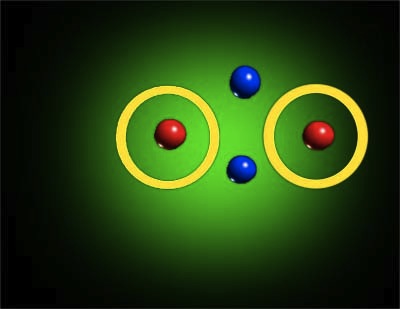
Most of the neutral atoms in the Universe now start gravitationally collapsing, including in one tiny corner of the Universe less than one-trillionth of its size in volume. That tiny fraction of the Universe, billions of years later, would become our local group, with our Milky Way, Andromeda, and (initially) with hundreds of satellite galaxies and many thousands of globular clusters. In the densest areas, after tens of millions of years, the hydrogen and helium gas become dense enough that -- for the first time -- nuclear fusion occurs. The first stars are born.

Very quickly, many of these stars run out of fuel, and die in tremendous explosions known as supernovae. Some are even big enough to cause hypernovae and gamma-ray bursts, the most powerful events in the known Universe. The heavy elements made in the core of these stars are recycled, and spit out throughout the galaxy. Space becomes enriched, for the first time, with carbon, nitrogen, and oxygen: the building blocks of life.
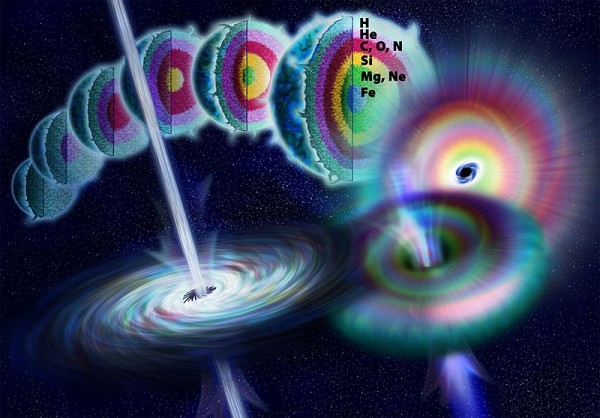
From a mix of primordial, unburned gas and the recycled material, a second generation of stars is born. Most of these are much lighter than the first generation; in fact, over 90% are even lighter than our Sun. But the heavier ones go through the same life cycle as their ancestors, burning through their fuel and dying in spectacular explosions.
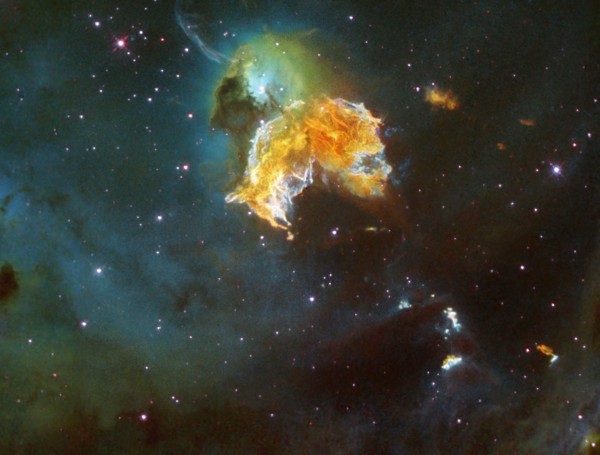
The ash from their stellar corpses, combined with pristine hydrogen and helium gas still lurking in our galaxy, collapsed once again under the irresistible force of gravity. The center of one of these collapsing regions gave rise to our Solar System, complete with the Sun and what would eventually form the planets and asteroids that orbit it.
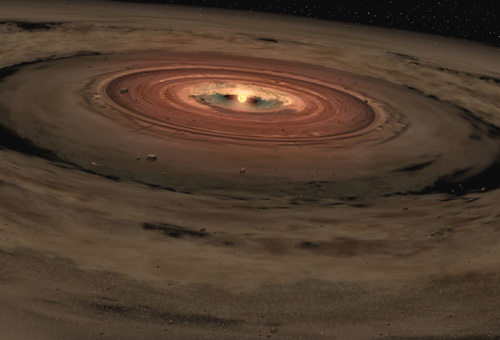
But on the outer edge, beyond Neptune, lies the Kuiper Belt. Out here, collections of atoms are pulled together by tiny electric forces, forming simple molecules like water, methane, and ammonia. These molecules are then pulled together by their own gravity, forming a belt full of icy rocks ranging in size from grains of sand to small worlds, nearly the size of our Moon.

Every once in a while, a chance gravitational encounter between two of these objects will send one of these icy rocks hurtling towards the inner solar system. As the icy rock nears the Sun, hurtling towards it at speeds nearing 100,000 miles-per-hour, the intensity of the heat becomes too great for these icy rocks, and the ices start to melt. The result produces a spectacular tail, visible to us as a comet.
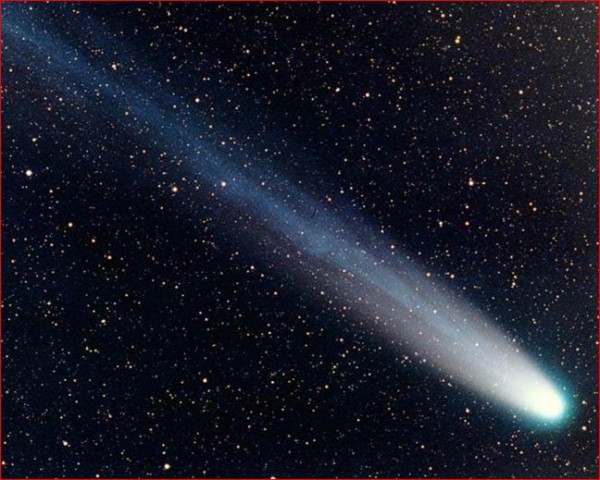
The comet will continue orbiting until it's entirely melted away, but what of its tail? Over the course of many centuries, the comet loses much of its ice, leaving an elliptical trail through interplanetary space known as an Comet Trail. This trail is simply the footprint that a comet leaves behind.

And once a year, if the comet's orbit intersects with the Earth's, our atmosphere collides with the dust left behind. The speed of these cometary fragments is often in excess of Mach 25, or faster than a bullet fired from the world's most powerful gun. The heat generated by the atmosphere colliding with this tiny grain of dust is enough to melt and then boil these ices, producing so much energy that it gives off not just heat, but visible light.
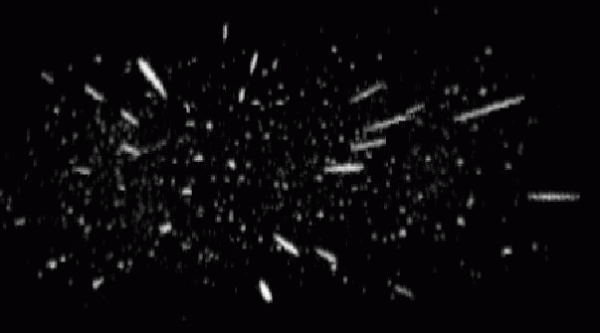
These "shooting stars" are what meteors are, and the Earth passing through these dusty trails are when meteor showers occur. After billions of years, two generations of stars, collapse into an icy rock, and a chance gravitational flinging towards the Sun, the dust from a comet collides with our atmosphere, producing a streak of light that, for a fraction of a second, can outshine the brightest star in the sky.
So thanks to comet Swift-Tuttle, which made the trail we're passing through this moment, and which is ultimately responsible for the Perseids. That's where meteor showers come from; now get out there and enjoy it!




I just stepped outside in my bathrobe. Luckily most neighbors are asleep with their lights off. And just as you predict, it is so dark, I'm tripping. But no meteors. I was tempted to lie down and watch but I stumbled back inside.
I thought the big bang was the end of a very stable cosmic thing, not the beginning. Anywhen, I just wanted to see the meteros. Maybe tomorrow. Good night.
OKThen said: "I just stepped outside in my bathrobe. ... But no meteors.
I think Ethan's job description gives it away: he's a _theoretical_ astrophysicist.
In practice, you'll be lucky to see as many as one a minute even under very good skies, and probably closer to one every 5 minutes. Of course you do have to dark adapt for the first few minutes so don't expect to see anything immediately if you're going outside from a bright room.
Ian
"...nuclei and electrons can come together to make neutral atoms..."
Neutral atoms my gas! You know that atoms are all collaborators, and could be working for ether side, right?
So it's not true that they come from Uranus? (hops on motorbike and speeds off...)
I haven't been terribly keen on spotting the showers lately; I'm either in a bad spot on the planet or the weather is awful. It's worse than fishing! I did get to see a few meteors from the Leonids though and they certainly are a pretty sight (if you ever see them). Some look like they're coming right at you, some leave a persistent trail which lasts a few seconds, and if you're really lucky (which I haven't been) you even get to hear some go 'pop!' Now if the weather's really awful you can still tune a shortwave radio and listen for the radio signals produced as the meteors streak through the atmosphere. If you're extremely lucky you get what people call a 'storm' rather than a shower - just oodles of streaks of light. There are a few such events on record over the past few hundred years. Over the past 15 years or so I've heard many predictions of such events but all predictions have been flops so I never get excited anymore when someone suggests there should be a good shower.
Nice post. I keep coming back here as much for the pictures as for the written content! Seriously though, I bet you write good papers, Ethan. You have an easy writing style and you explain things very well.
I've seen a few good meteors recently (Aquarids I think) so I'll keep an eye out later tonight. The Perseids are not so good for us Down Under since Perseus stays low in the north and doesn't rise till about 2am. In fact, from my latitude 33S the radiant doesn't rise above the horizon at all. So I won't see half the meteors. That's why you annoyed me by saying:
"...towards the constellation Cassiopeia, easily visible from most places on Earth!"
Cassiopeia is invisible from my place! Although we do have the Southern Cross all night so it's a good trade-off IMO :)
HOORAH!
Here I am. At Menorca (Spain) in august. Summer!
But a strange summer it is. So the prediction for tonight is.... rain!
I'm not sure if it's happening on the bottom of the world, but here in Australia Venus, Mars, Saturn and the new moon are all hanging out in the western sky. Unfortunately it's very cloudy and you can't see squat. Damn winter weather.
Acredito que voce quer ganhar as eleições de 2010. Tomo a liberdade de contata-lo através de seu site para que utilize alguns minutos de seu tempo para acessar nosso portal www.LIGADOR.com e descubra porque os Torpedos de Voz são a aposta de muitos candidatos, especialmente de quem já venceu eleiçoes anteriores usando essa ferramenta.
Qualquer duvida estou a disposição.
Renato Lessa
Diretor de novos Negocios
MSN: renatolp@uol.com.br
(11) 37171011
Telemarketing Automatico Politico
http://www.oligador.com.br/TelemarketingAutomaticoPolitico.pdf
So what is the sizes of these meteors?
Where do the meteors go after the shower?
Meteors come from heaven. hahha. well today and tomorrow we should see another meteor shower but there will also be a full moon which may outshine nature's show.
Every once in a while, a chance gravitational encounter between two of these objects will send one of these icy rocks hurtling towards the inner solar system. As the icy rock nears the Sun, hurtling towards it at speeds nearing 100,000 miles-per-hour, the intensity of the heat becomes too great for these icy rocks, and the ices start to melt. The result produces a spectacular tail, visible to us as a comet.
Food for deep thought … it’s said that meteor showers originate from some point in deep space .. and though the big bang theory of meteor showers coming form left over rock debris is a good speculation … Suppose these such meteors were deliberately prepared ‘raw waste cubicles’ designed to ignite and burn up after being ejected for disposal from some advance star colony hidden from our view .. I would consider all colonies of intelligence, would have some means of disposing of raw waste materials … yet at the same period of such a scheduled event … it would be a perfect time to use travel pods as to enter Earth’s atmosphere under the illusion of being a meteorite ..
Space is big, Faye. You don't realise how mind-bogglingly big it is... (etc, etc)
For that ejecta to come from interstellar travel, there would have to be so much of it in free space between the planets that we'd be able to see it between the stars.
If it were interplanetary ejecta, then the mass required is astronomically smaller and therefore more plausible. But the question becomes: Wherethefuckarethey?
Please please PLEASE stop trying to shoehorn a fantasy idea that life on earth was done by the precepts of "Intelligent Design" so that you can get your "Oh, it's not God (wink, wink)" religious text "taught" in schools. It's just annoyingly stupid: humanity OUGHT to be smart enough to do without that sort of lying.
PS Irony: saying "Food for thought" followed by something where no thought has been given to its promulgation.
"Where do the meteors go after the shower?"
Home to the wife and kids, now that they're smelling fresh.